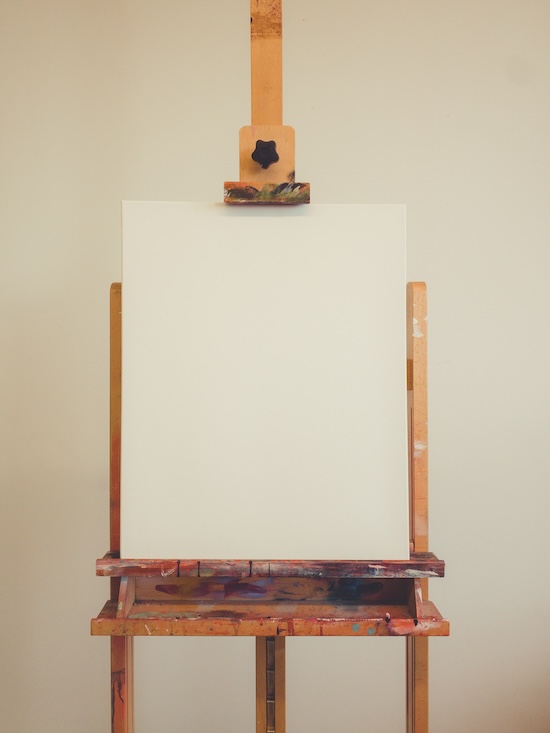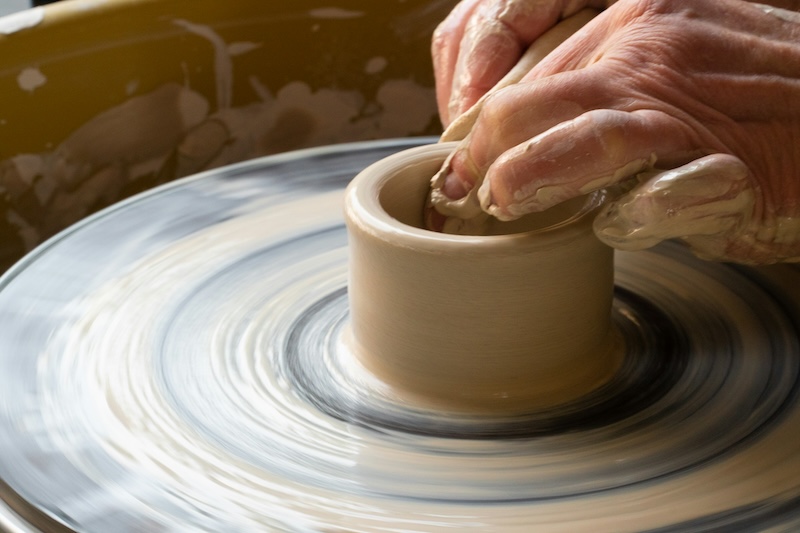It can almost feel ceremonial: after hours spent soul-searching and contemplating color, composition, and each individual brush stroke, it’s not uncommon to want to sign a finished work. But what if leaving your mark actually detracts from the final piece?
Artist signatures can have their place, but creators need to think critically about how they might interfere with the work. A large signature or digital watermark can feel like a way to claim authorship and protect your art, but many collectors and curators find that large signatures actually take away from pieces they might otherwise love.
So what’s an artist to do?
With a long and storied history, artist signatures can sometimes work—they just require a thoughtful and holistic approach. But occasionally, the old adage “less is more” is an important piece of wisdom that we should take to heart. Let’s take a closer look at the role of artist signatures and how they can impact your artwork.
Artist signatures throughout history
During the early Renaissance, art production began to shift from cooperative guild systems to independent creators, creating a new opportunity to herald the individual and celebrate their creativity. As a result, artist signatures became prevalent, offering an opportunity to stand apart from creative peers while claiming authorship of the work.
But these brilliant aesthetes often shared something in common: an understanding of how a signature ultimately functions as a design element. Imagine the oeuvre of Albrecht Dürer, whose instantly recognizable monogram is as enduring as the work itself. His ‘AD’ signature, which is elegant and refined, never takes away from the images that it claims. In fact, one might say that Dürer hit the signature jackpot: his trademark became so popular that the artist went to court in Nuremberg and Venice in an effort to protect his authorship.
Artist signatures are a design function
While a fascinating historical tidbit, you might say that Dürer’s example is, in fact, uncommon. The reality is that few artists have developed a signature that can be so seamlessly integrated into the work, and that is because they often have an indelible impact on the art itself.
Sometimes—and this is entirely contingent upon the nature of the piece—an artist can find a clever way to incorporate their signature. Imagine the erratic lines of Jackson Pollock’s wild abstracts, for example: it’s unsurprising that the artist was able to easily add his signature to the composition.

It all begins with a blank canvas. Why obscure your work with a bad artist signature?
Artist signatures can interfere with intent
Perhaps the best question to ask yourself when contemplating an artist signature is, “does it interfere with the intention of my work?”. If your signature doesn’t fade into the background, it’s time to acknowledge that it has become a part of the composition—and that can ultimately distract or, even worse, take away from your original purpose.
If you find that your signature stands out too much, it’s time to reevaluate your approach. Using a color that features prominently in the work may allow your signature to camouflage itself, or you might even consider going smaller. The safest bet? You can always sign the back and rest easy knowing that your art is doing all the talking.
Artist signatures can turn buyers off
It’s sad but true, and something we’ve experienced firsthand: clumsy artist signatures can be so overwhelming as to make an otherwise knockout piece feel entirely amateurish. From jurying our Open Calls to selecting works for corporate clients, you’d be surprised by the number of times we’ve wanted to love something, but had to step away.
Just as it is for the artist, the buyer is responding to their own aesthetics and preferences. What might feel to you as a proud symbol of your artistic endeavors may thwart potential collectors and art buyers. Consider playing it safe and signing only the back.

Focus on creating, not obscuring with a loud artist signature.
Digital alternatives to artist signatures
Even before the more recent deluge of AI technology, there was a lot of fear and paranoia surrounding how to share one’s work on the internet. And it’s not without reason: with a massive proliferation of high quality images, it became easier than ever to steal creative work. And unfortunately, people did take advantage: companies would steal artwork for their own branding purposes and individuals could attempt to reprint an artist’s work without paying them properly.
Understandably, a number of creatives decided to fight back, and the ubiquitous watermark first started to appear. However, despite its best intentions, it’s not without its drawbacks. Large and prominently displayed, a watermark can definitely aid in preventing theft. However, we’d argue that it can also threaten potential opportunities.
But thankfully, computer scientists are developing new tools to aid in the fight. Glaze is a program that changes the pixels in an artwork, making it harder for AI models to mimic a specific artist’s style. There’s also the recently launched Nightshade, which you might think of as “adding a small poison pill inside an artwork in such a way that it’s literally trying to confuse the training model on what is actually in the image.” Working with one or several of these programs is a great way to protect your artwork without sacrificing quality, allowing you to connect with your audience while prioritizing your peace of mind.
Another old-school tactic that we love? Pay attention to image quality: your art can look sensational on the screen while being impossible to reproduce. Play with different sizes and DPI to strike a balance between a professional display and protecting your intellectual property.
Artist signatures can absolutely have value: they signify completion, celebrate authorship, and even help art historians understand and date individual works. Just be mindful of your approach: after pouring your heart and soul out onto the canvas, the last thing you want to do is detract from the art. Understanding the role of a signature as a design element is critical to determining your own unique approach. What works best for you?
How do you feel about signing your work? What approaches compliment your art? We want to explore the relationship between creating and asserting authorship. Let us know in the comments!
